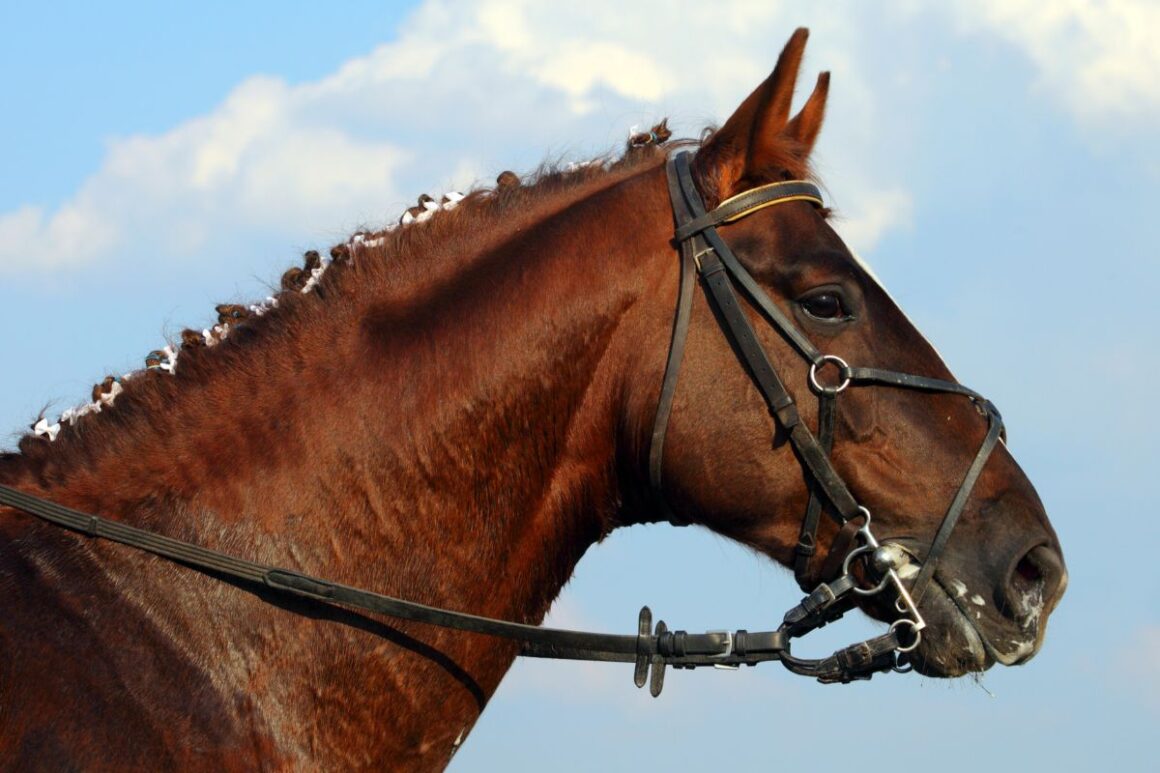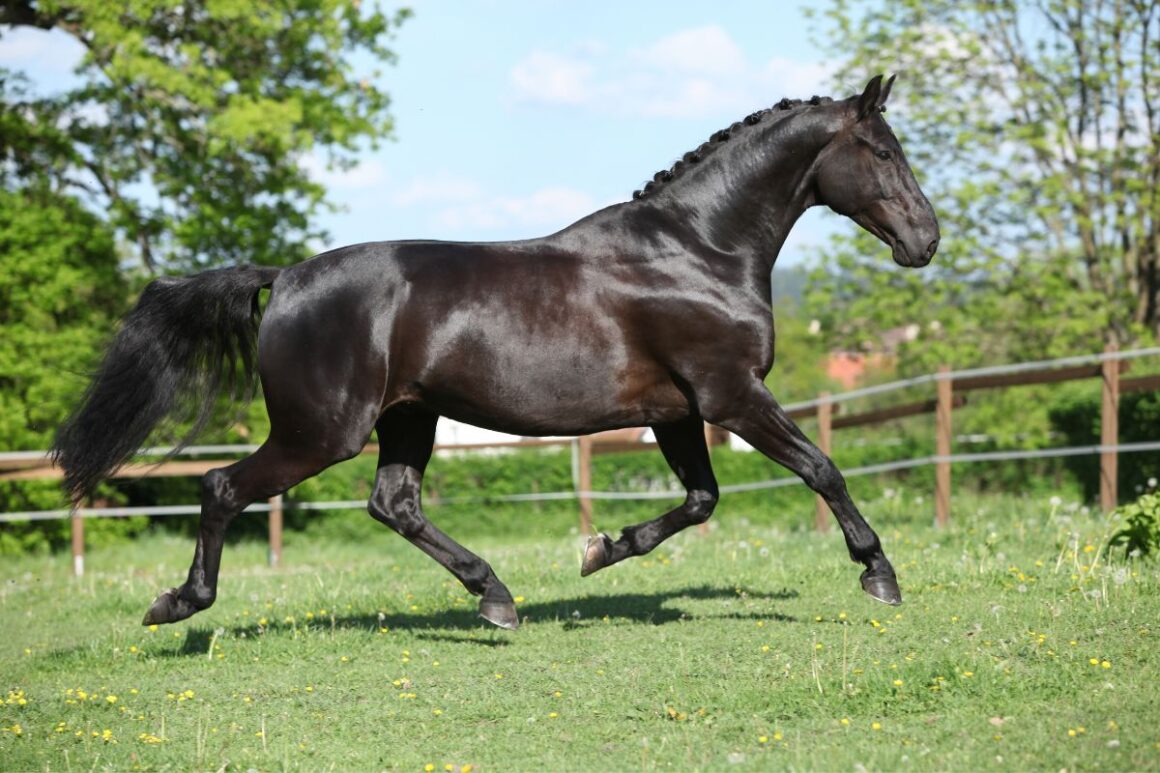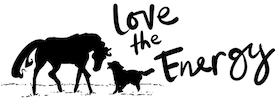What is a Warmblood horse? It’s complicated. In simple terms, a Warmblood Horse is a type that mixes the cold blood of draft breeds with the hot blood of lighter horse breeds like Arabians. The more complex answer is a series of breeding and strategizing to create athletic horses that excel in the Olympic disciplines – dressage, eventing, and show jumping – as well as others.

Horses were the lifeblood of people for thousands of years until mechanization decreased human reliance on them. In Europe, people had generations of horse breeding in their families, often passing down horses and their bloodlines the way others share family heirlooms. Warmblood horses developed when interest grew in Olympic equestrian sports after World War II.
The simple definition of a Warmblood horse is that it is a cross between the heavy draft breeds – or cold-blooded horses, and the lighter, hot-blooded horses that include Thoroughbreds and Arabians. But life is rarely that simple. The Warmblood type has extended well beyond just crossing a cold- and hot-blooded horse with each other. They have their own breed registries, standards, and performance evaluations that are as detailed as any other horse breed registry.
These magnificent animals have exceptional athleticism and kind temperaments. The combination means that Warmblood horses are often at the top of the standings in the highest levels of the sport, whether that’s at the Olympic Games or in some other area. Examples of Warmblood breeds include the Hanoverian, Holsteiner, Oldenburg, Trakehner, Dutch Warmblood, Danish Warmblood, Rhinelander, Westphalian, Belgian Warmblood, and Selle Francais, among others.

History of Warmblood Horses
The informal history of Warmblood horses begins long ago. Draft breeds, or our heavy, cold-blooded horses originally needed to be large so that they could carry a knight in full armor into battle, pull the heavy canons on a battlefield, perform agricultural labor, and pull heavy wagons from one place to another.
But times change. Knights became soldiers and the heavy armor and jousting lances gave way to swords and then guns. The horses evolved alongside their riders. Of course, a heavy horse that could withstand the rigors of battle was still needed, but it also needed to be agile and athletic.
Horses for transportation, and some agricultural work, evolved at the same time. People today often drive flashy cars as a status symbol, and horses were likewise the status symbol of their times. Lighter horses with arched necks, and fancy, high-stepping gaits became more desirable for pulling carriages.
Careful breeding by those seeking both types of horses began. It probably began by crossing a Thoroughbred with the Shire, or other similar crosses. It evolved into breeding Warmbloods to other Warmbloods. They infused more hot or cold blood, depending on the needed traits.
Breed Characteristics
There are some breed characteristics that are universal across all types of Warmblood horses, however, each of the individual breeds does have its own characteristics. In general, Warmbloods are of medium weight, with long, clean legs, and an athletic body. Their head is noble with intelligent and kind eyes. They have long, arched necks with sloping shoulders and prominent withers.
Warmblood horses have elastic and springy gaits, making them appear to float across the ground. These gaits are due to their powerful hindquarters and athletic bodies. One of the key characteristics of all Warmbloods is their friendly temperament and willingness to learn. They’ve earned a reputation as being easy to train, which is one of the reasons, besides their athleticism, that they’re so popular with equestrians.
Studbooks and Breed Evaluations
In general, most of the Warmblood registries have an open studbook. This means that a horse can be bred to another similar breed or type and the resulting offspring can still be registered. These open studbooks are different than breeds like Thoroughbreds and Arabians where the lineage of both parents must lie within the registry. The Trakehner breed is an exception for Warmbloods as it does have a closed studbook. The Hanoverian, Selle Francais, and Holsteiner registries, among others, are also more closed. This policy may continue evolving over time.
Rigorous breed and performance evaluations maintain studbook quality. Many will not register a horse until it has passed inspection, and some have regular re-inspections for all breeding horses. This helps ensure the quality of the breed, and athleticism of the horses, and creates breeds that are free from issues and negative traits.
Warmblood Horses Today
Warmblood horses today are the darlings of the Olympic disciplines and those coveted by many equestrians. They are teaching beginners to ride or guiding an amateur up through the show jumping ranks. They are piaffing their way to a blue ribbon in the dressage ring and making a cross-country course look effortless. Warmbloods are found throughout the world and their congeniality and athleticism help them continue gaining popularity.
Sources: American Warmblood Registry, American Warmblood Society & Sporthorse Registry, Belgian Warmblood, Kentucky Equine Research, and Horse Canada.
